Bridgestone Turanza AR10 test
Japanese rubber giant, no not Godzilla……, the other one…..,
That’s right Bridgestone recently introduced a new mass market model, called the Turanza AR10.
They claim that it has been designed to suit the needs and demands of the average driver who, apparently gets very annoyed with tyre noise and places a lot of importance on wet grip. They also said that the AR10 gives smoother ride over rough surfaces and is long lasting.
What better way to prove this than to take us to Bangkok, after all bangkok has a big river running through it and is a fun city, two major ingredients for a successful test drive. These Japanese companies they they think of everything;-)
After an invigorating afternoon looking at riverboats packed with tourists and a good night rest we were then taken to meet AR10.
This being Bangkok, it takes an hour to get anywhere but since the Bridgestone factory and proving grounds is an hour outside Bangkok, it took us the full 120 minutes of nodding off in a bus before we got there.
Meet AR10. Like most tyres it is round black and have grooves in them but these treads were not chosen for good looks alone, they have been scientifically designed to give the tyre good water clearing properties and they are suppose to be quiet too.
The four deep grooves are the key to reducing the risk of aquaplaning and they work together with the 3-D tread design. Those little ramps and cuts on the centre blocks help the tyre to become a more efficient water pump.
If you look at them closely, the tread is also no perfectly flat but bulges slightly in the centre, like a cushion to better reduce tyre noise as the tread slams down onto the road surface at normal driving speed.
Of course it uses Bridgestone’s well-known formulation for grippy rubber to make it stick better to the road and driver input.
The side wall construction has been improved by extending the side nylons into the main plies. This gives the tyre better deformation characteristics and help keep the car more stable on rough roads.
OK enough of the tech speak, it’s now time to burn some rubber or at least make them squeal like girls.
The Bangkok proving grounds that you see here will be ripped up in a few months time to make way for a new factory or storage block, a new longer and more comprehensive track will be built nearby. Our test drive may be the last Media event to be held on this track. What you see behind the car is the simulated road surface section in the foreground and the main straight in the background.
These tyre tests are very controlled and our sessions will consist of noise test which involves driving at a constant speed of 60km/h and listening very carefully to the difference between the two sample tyres. In our case the AR10 and its predecessor, the ER60.
Then we would go over the simulated rough-road section to prove that the new rubber helps to improve a car’s stability on uneven and broken surfaces.
The other part will involve wet and dry tests and finally we are let loose on the whole track. Safety is very important and everyone is reminded to observe the speed limit, or at least not exceed by too much.
After the safety briefing, we are finally ready to go on the test drive.
This may look like an ordinary red plastic chair but it is actually a very important piece of technical equipment, it is the backside calibration device, you have to sit on it for few minutes to calm your rear end so that it can better detect the quality of ride on the new tyres.
You know I am kidding right?
The first exercise was the noise test and it is usually the hardest for us journalists because after years of punishing our eardrums with the loud roars of engines, our ears are no longer as sensitive as they should be.
Still, we tried very hard.
We turned off the Air-Cond and even shhhushed our talkative colleagues and concentrated real hard on the soft drone of the tyres.
I came to the conclusion that I may need to visit my ear specialist soon but fellow tester, Chris Wee insisted that he could hear a difference. He said that the AR10 had a slight advantage over the ER60 when it came to tyre noise. Short of anyone disproving him with a decibel meter, Chris’s findings are good enough for me.
When we drove over the simulated rough roads I began to appreciate my time on the backside calibration device. I could actually feel the AR10 riding better over broken surfaces and it did seem that the tyre actually reduced the need for driver correction. I don’t really understand the physics or mechanics behind it but smarter men in Bridgestone overalls told me it has something to do with the new sidewall construction.
Impressive, I thought.
Then came the wet test, here we enter a constant radius left-hand corner at 65km/h, a speed that has been specifically chosen because it takes us to the point where the tyre starts to understeer in the rain. We are suppose to detect how the AR10 behaves compared to the ER60 and I am happy to report that the new tyre understeer slightly less and is more stable when corrections are made mid corners, in the wet.
Predictability in the wet is critical for a mass market tyre because most drivers in this segment are not enthusiasts and they can get flustered more easily. When a tyre reacts gently and predictably to driver input, it inspires confidence and helps to keep tricky situations from getting out of hand.
The AR10’s advantage over the ER60 in the wet is noticeable and this a crucial consideration for many drivers, especially in our tropical climate.
The final section is the dry test where we enter a large constant radius left-hander at 75km/h and gently modulate the throttle to induce understeer and make the necessary corrections which may include a combination of actions including lifting off the throttle and making directional corrections through the steering.
Here, the AR10 advantage is barely noticeable but then again Bridgestone said the new tyre’s dry performance is comparable to the ER60 even though it has been designed to improve wet handling characteristics. Usually wet and dry performance are mutually exclusive but Bridgestone has been able to find a satisfactory compromise between the two.
The AR10 is certainly a tyre worth looking at the next time you need a new set. Tyre companies rarely give out prices so it is best that you check with your local outlet but they say that it is competitive when compared with other premium brands.




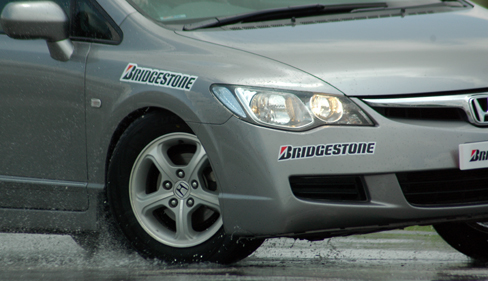


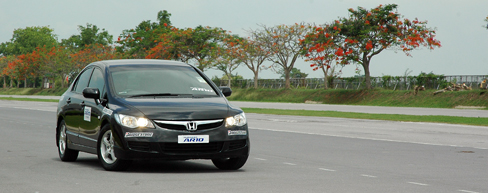
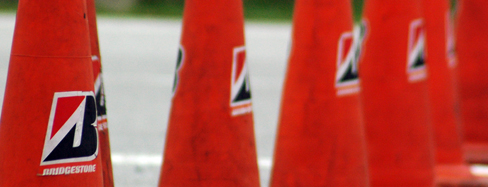

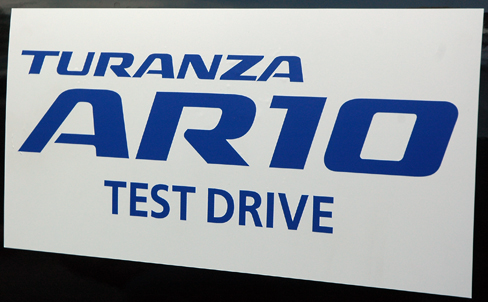
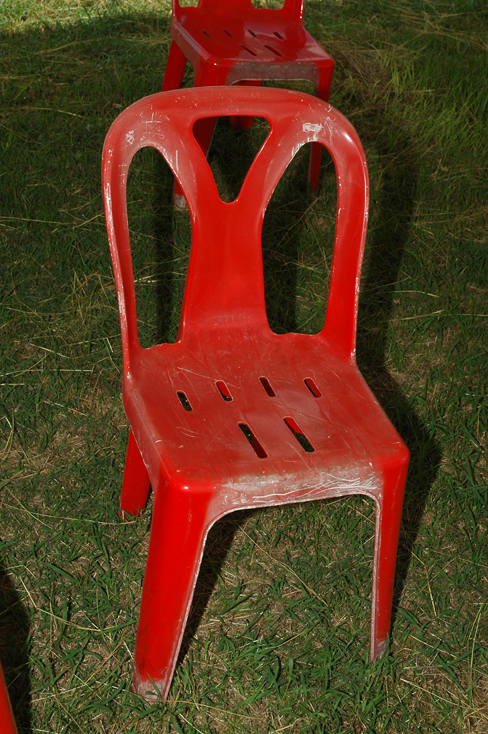
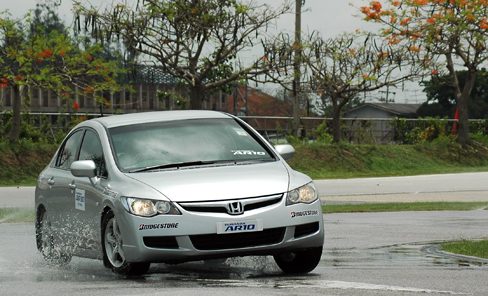
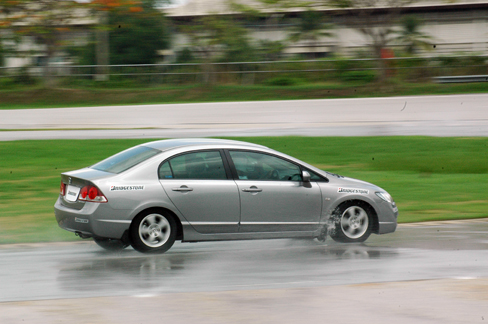
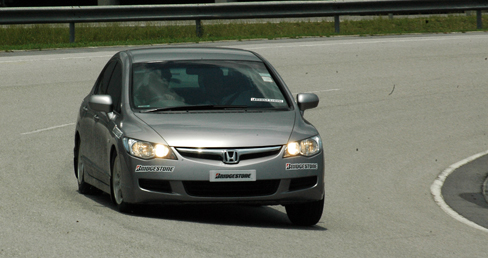






















I have seen this tire at our Bridgestone agent here in Egypt. He said it is new.
After reading about your test drive for this brand, I think I’m gonna try them on my Daihatsu.
It has compettive price for its technology & safety.
Adel Hesham Elewa
Architect
I just bought Turanza AR10 for my Proton Saga, size 185/60/R14. Previously, I was happy with Continental Comfort Contact and Barum. Then after ride with Ar10, it really changed my perception about those two. Good grip at wet and dry. Never feel this sensation before, of course because I was using low-end brands. I’m an aggressive driver who loves cornering at hi-speed and mastered in drifting techniques. But with AR10, its hard for me to drift anymore since it really good in gripping and hard to be out of control. Now I’ll try to find out how many km this tire could maintain its life. With Continental and Barum, I managed to use it untill 80,000km. Ar10’s price also interesting. USD188 for 4 pcs.
Congratulations to Bridgestone.
Dear Mr. Rozaily,
I hope u can update your feedback abt Turanza AR10, because i plan to get Turanza AR10 for my car. Since you use the tire from Feb 2010, maybe now you already reach more than 20000 km, right?, hows the tire tread? your opition.., can the tire manage more than 50 000 km?